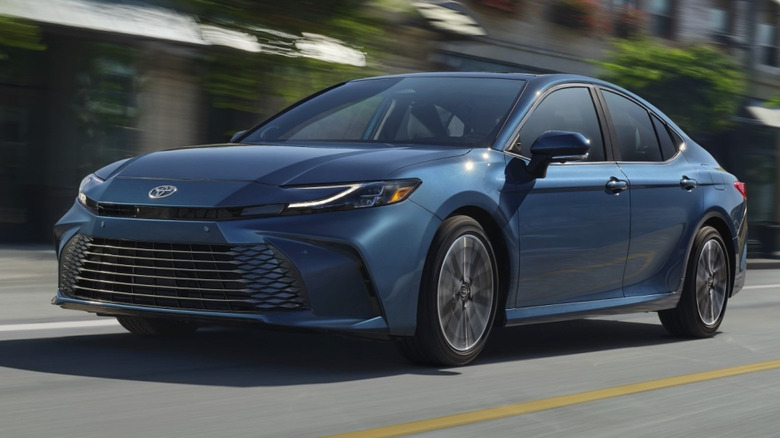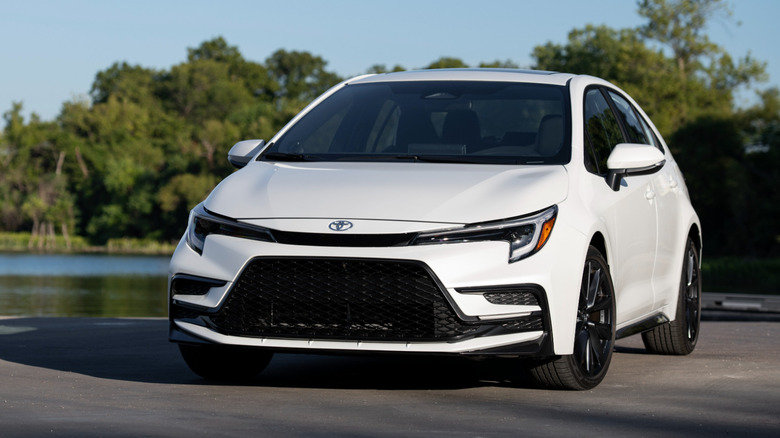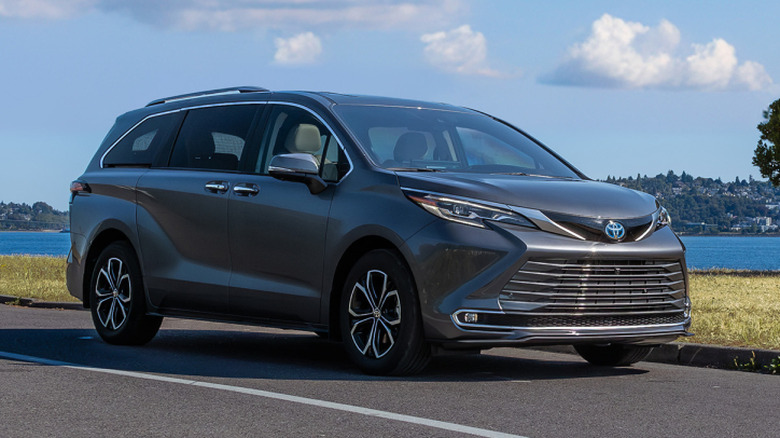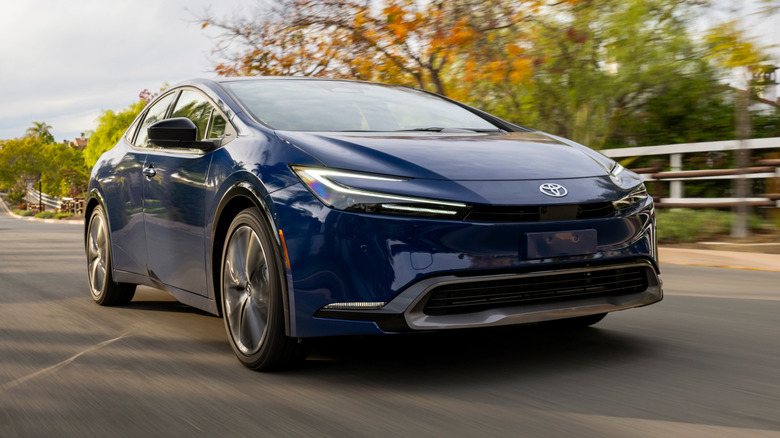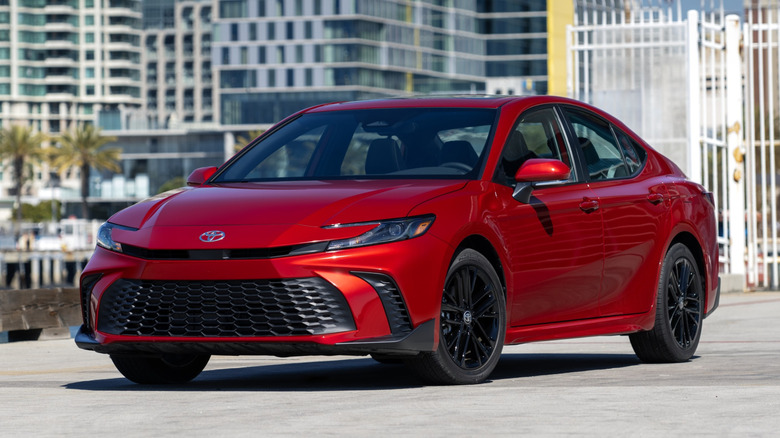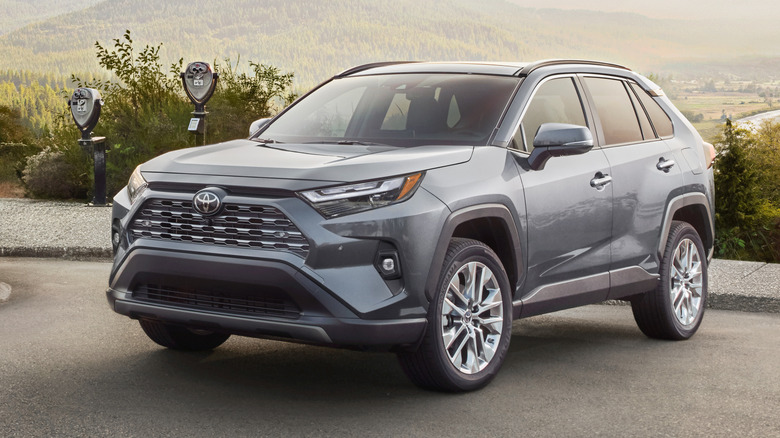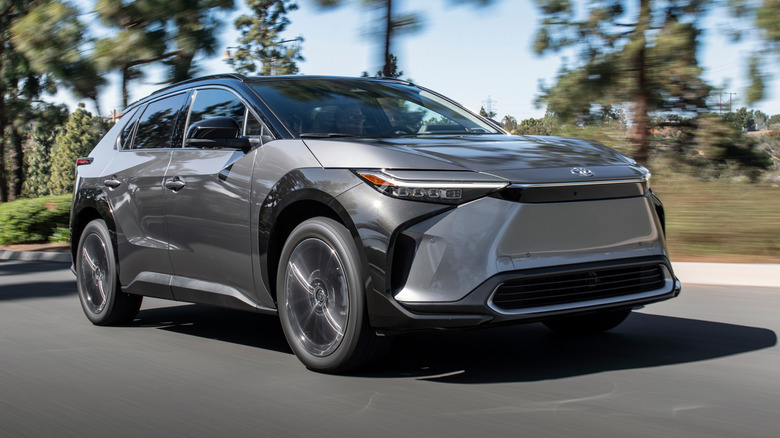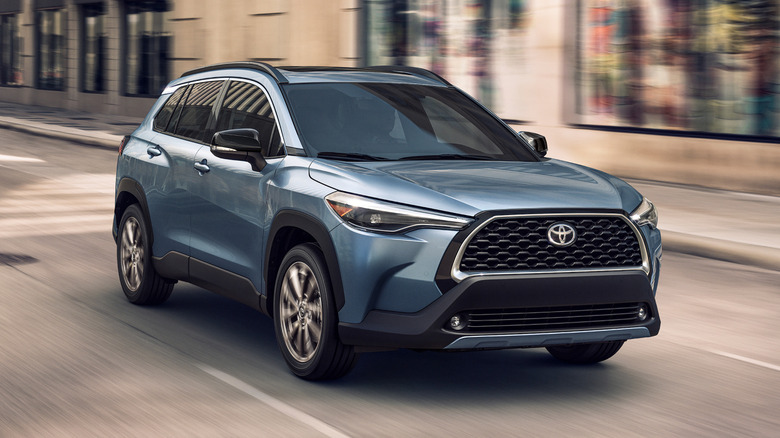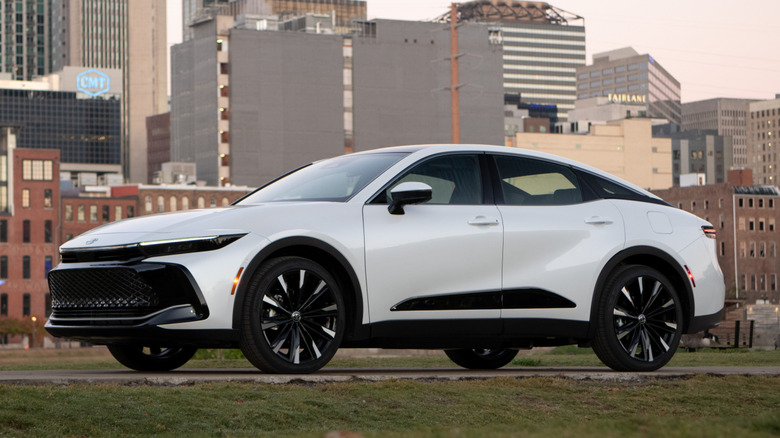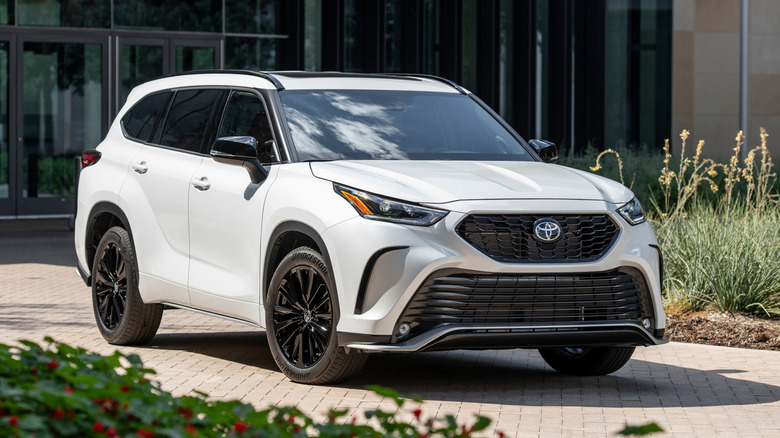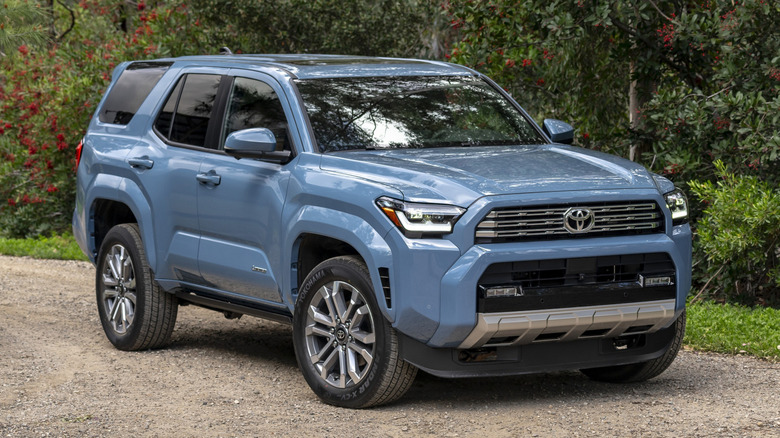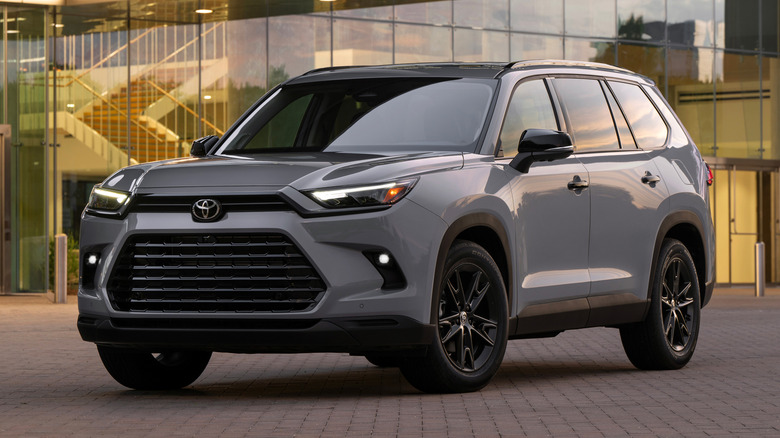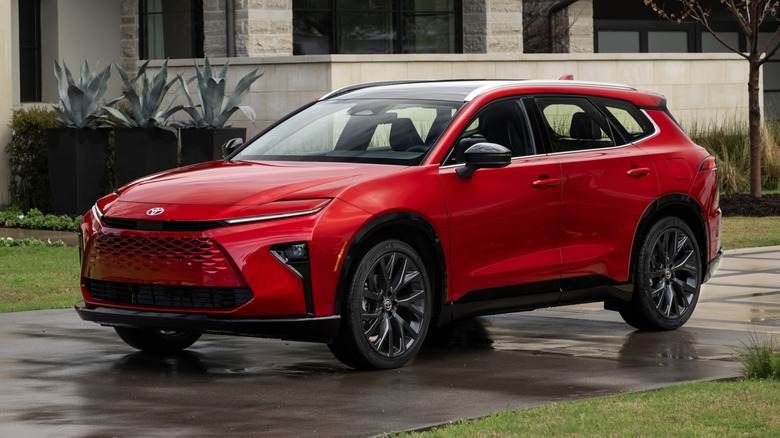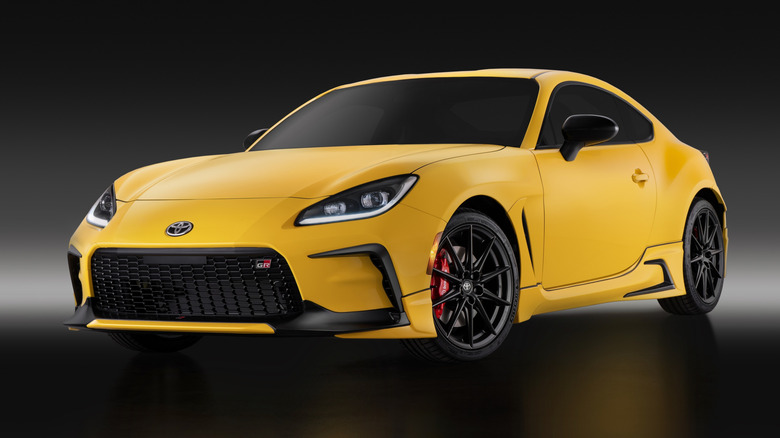14 Toyota Cars With Cheap Maintenance Costs
Despite the constant evolution of the car market — particularly in the last few years as manufacturers scramble to switch to electrified models — Toyota remains a consistently popular brand with buyers. It has a strong reputation for safety, reliability, and competitive pricing, both at the point of purchase and in terms of maintenance costs. Inevitably, some of its models perform better than others when it comes to saving their owners money on servicing, but on the whole, buying a Toyota remains a safe bet.
We've used data from car comparison platform CarEdge to compile a list of Toyota's top-performing models for maintenance costs, with each of these models predicted to cost less to keep on the road over a 10 year period than the average vehicles in their segment. As well as offering low maintenance costs, most also can be purchased new for competitive prices, with a variety of models available for $30,000 or less.
Toyota Corolla
In 2021, Toyota announced that it had built the 50 millionth example of the Corolla, making it not only the best-selling Toyota model ever, but also one of the best-selling cars of all time.
The car's immense popularity over the decades has been the result of the brand's continuous efforts to ensure that every generation of the car remains reliable, practical, and cheap to run. The latest generation is no different, with CarEdge data predicting that a new Corolla will cost its owner $4,444 in maintenance and repairs over the course of 10 years. That's significantly less than the average bill for the sedan segment over the same time period.
As well as being cheap to run, the Corolla is also cheap to buy, and starts from $22,325 excluding fees for 2025. It's available in both hybrid and non-hybrid form, and we put the current generation Corolla Hybrid through its paces back in 2023. We came away impressed, noting that the car's generous equipment levels and high efficiency made it solid value for the price. Like previous models, the latest Corolla isn't particularly interesting to drive, nor is it the most memorable looking car in its segment, but buyers looking for either of those can find similarly affordable alternatives elsewhere in Toyota's lineup.
Toyota Sienna
The Toyota Sienna has undergone few changes for the 2025 model year, such as adding wireless Android Auto and Apple CarPlay as standard and a wireless charging pad for keeping small devices like smartphones topped up on the go. The new upgrades haven't altered the fact that the Sienna is still competitively priced, with the MSRP starting at around the $40,000 mark for 2025.
A range of six trims are available, stretching from the value-oriented LE trim to the top-spec Platinum trim. The latter comes at a significant premium, starting from $56,145 excluding fees.
No matter which end of the trim range buyers pick, the Sienna remains a competitive choice when it comes to running costs. According to CarEdge, a new Sienna should require an estimated $6,454 for maintenance and repairs over its first decade on the road, which is $2,771 less than the segment average for minivans. The same dataset also shows that Siennas are significantly less likely to require major repairs during that period than other minivan rivals.
Toyota Prius
Until the launch of the latest generation, it's safe to assume that no one was buying a Prius because of its looks. In fact, plenty of buyers might well have bought one in spite of them. Thankfully, Toyota decided to give their popular hybrid a thorough visual overhaul, and the current generation of Toyota Prius looks far sleeker than many buyers might expect. It starts from just under $30,000 for 2025, and like other popular Toyota models, a broad range of trims are available to choose from.
All-wheel drive is optionally available with all variants — including the base-spec LE trim — and it adds less than $2,000 to the cost of the car. As well as being affordable upfront, the Prius should remain affordable over the long term, as it boasts the highest fuel efficiency figures of any hybrid on the market, excluding PHEVs.
Speaking of plug-in hybrids, Toyota also offers a PHEV version of the Prius. Formerly, it was called the Prius Prime, but it's now been renamed as the Prius Plug-In Hybrid. The Prius is cheap to maintain and repair too, with CarEdge estimating that it should cost $4,380 to maintain over 10 years, around $500 less than the average hatchback.
Toyota Camry
Another of Toyota's best known nameplates, the Camry continues to be a sensible, cost-effective option for buyers looking for reliable transportation. For 2025, it's also better to drive, and it's more efficient than before thanks to a standard hybrid powertrain. The 2025 Toyota Camry's cabin was given a spruce-up, with Toyota's latest infotainment tech and more driver assistance tech on offer.
Front wheel drive and all-wheel drive variants are offered, although the Camry's trim range is condensed compared to other Toyota models. Four trims are available, with the cheapest being the LE at a starting price of just under $30,000.
We thought that the LE's equipment list was less generous for the price than other trims within the range, with the SE, XLE, and range-topping XSE trims all offering significantly more features for only a minimal jump in price. Unsurprisingly given the Camry's reputation as a sensible daily driver, its maintenance costs are cheaper than many of its rivals, with CarEdge calculating that owners can expect to spend $4,597 over a 10 year period.
Toyota RAV4
The RAV4 is a particularly important model for Toyota, with the brand shifting over 475,000 examples in 2024 according to CarFigures data. It's available with or without a hybrid powertrain, with the latter making use of the 2.5L four-cylinder gas-electric powertrain that can be found under the hood of a variety of current Toyota models.
The 2025 RAV4 Hybrid is the de facto choice for buyers looking for the best efficiency, and it's affordable too, with prices starting from $32,300 excluding fees. The non-hybrid variant is slightly cheaper, starting from $29,250 excluding fees.
Buyers certainly don't flock to the RAV4 in droves because of its engaging handling or punchy powertrain — it has neither. What it does offer is space, reliability, and low running costs, with CarEdge estimating that it should cost $6,007 in maintenance and repairs to keep on the road for a decade. That's higher than some other, similarly priced Toyotas, but still notably cheaper than the industry average for SUVs.
Toyota bZ4X
As of this writing, the bZ4X remains the only all-electric model in Toyota's U.S. lineup. We drove the current generation car at its launch and found it to be a typical Toyota in many respects, offering hassle-free driving and plenty of tech as standard. However, it was far from a slam dunk for the EV, as we weren't as sold on its cabin design, which felt less streamlined than rival EVs, and its range also lagged behind the best in class.
When we drove it, the bZ4X was also quite costly compared to other Toyota models, with even the base-spec variant costing over $40,000. In the two years since that review, the brand has reduced the price of the base bZ4X slightly, and it now clocks in at $37,070 excluding fees. That's still no bargain, and other rivals offer more range and capability for a similar price.
Still, pure capability only forms part of the equation when considering a Toyota. The other part of the equation involves the car's long-term running costs, and that's where the bZ4X is still ahead of its rivals. CarEdge predicts that buyers should expect to shell out $3,496 in maintenance and repair costs over 10 years, which is far less than the average new SUV. The Toyota also has a notably lower chance of requiring major repairs over that period compared to the segment average.
Toyota Corolla Cross
Toyota's broad lineup means that a few of its models inevitably overlap, and the Corolla Cross Hybrid suffers slightly because of that. Anyone simply on the hunt for the best value new Toyota will likely be better served opting for the Corolla Hybrid, which is slightly cheaper upfront, while anyone looking to get the best of Toyota's market-leading hybrid powertrains should also consider a Prius. The Corolla Cross essentially exists as a way for Toyota to tap into the strong buyer demand for affordable SUVs and crossovers, and in that sense, it fulfills its brief well.
It offers many of the things that SUV buyers will be looking for — a higher driving position, all-wheel drive as standard, and plenty of standard safety and convenience tech. It's also typical of other Toyota models in that it's efficient and cheap to maintain, with CarEdge forecasting that it should cost $5,875 over 10 years in maintenance and repairs. That's a notably higher figure than both the Corolla and the Camry, but for anyone who's absolutely set on small SUV ownership, it's still less than most of its rivals in the same segment.
Toyota Crown
One of the less conventional models in the brand's current range, the Toyota Crown combines crossover and sedan styling to create a unique looking car that's still packed with Toyota practicality. It's the latest iteration of a long line of Crown sedans, which have decades of history in Japan but have only infrequently made it to America.
Under the hood of the unusual-looking Crown is a much less unusual 2.5L four-cylinder hybrid powertrain, the same one that is shared with a number of other popular Toyota models. Buyers looking for some added punch could step up to the Hybrid MAX powertrain, which uses a 2.4L four-cylinder engine and churns out 340 horsepower.
Even in base-spec form, the Crown isn't cheap, with a starting price of $41,440 excluding fees. On the other end of the range, the top-spec Platinum trim with its Hybrid MAX powertrain and upscale interior will cost at least $54,990 without fees, and that's excluding the cost of any extras. At least buyers of the Crown won't have to worry about excessive maintenance costs, as CarEdge reports that the car should cost $4,932 in maintenance and repairs over its first 10 years on the road, which is $833 less than the average sedan.
Toyota Highlander
While it's far from a sales flop, the Toyota Highlander isn't as popular with American buyers as it once was. According to CarFigures, Toyota sold 89,658 examples of the three-row SUV in 2024 — not bad, but down from 171,289 examples the year before. Some of those lost sales could be attributed to Toyota's launch of other overlapping models such as the Grand Highlander, which offers more interior space and arguably sharper styling for only a minimal premium.
However, that doesn't explain the drop entirely, and Toyota will no doubt be analyzing its sales figures to work out exactly which rival cars potential Highlander buyers ended up taking home. It might no longer be a bestseller, but the Highlander is still competitively priced for 2025, with a starting MSRP of around $40,000 for the base-spec variant. Both hybrid and non-hybrid powertrains are offered, with the top-spec hybrid variant being the $53,975 Highlander Hybrid Platinum.
Data from CarEdge predicts that the Highlander should be affordable to run too, costing an estimated $6,291 in maintenance and repair over 10 years.
Toyota 4Runner
The previous generation 4Runner was becoming something of a relic by modern SUV standards, being old-school both inside and out and being increasingly beaten on value and refinement by upstart rivals. After the 2024 model year, Toyota decided it was time to finally replace it with an all-new generation, and having tested the 2025 Toyota 4Runner out off-road, we can confirm it's just as capable as before.
Thankfully, it's also significantly more modern inside than before, and can be had with a hybrid powertrain with up to 326 horsepower and 465 lb-ft of torque on offer. It's too early to say for sure whether the latest 4Runner will be just as reliable as its predecessors, but CarEdge data forecasts that low running costs are still the most likely scenario.
An estimated $6,492 spend on maintenance and repairs over 10 years is significantly cheaper than the SUV average, and the 4Runner should be less likely to need a major repair too. Prices start at $40,770 excluding fees for 2025, with the cheapest hybrid variant, the TRD Off-Road i-FORCE MAX, available from $51,990 excluding fees.
Toyota Mirai
Hydrogen vehicles are still limited in their real-world usefulness by a lack of refueling infrastructure, but a few manufacturers offer them in select states. Toyota is one such manufacturer, with its Mirai sedan starting from $50,190 excluding fees. It is only available in certain Californian Toyota dealerships.
Outwardly, the current generation looks at first glance like a regular sedan, and that's by design. Toyota arguably tried too hard to make the previous generation Toyota Mirai look different, but the resulting design looked ungainly and incoherent from certain angles. The current Mirai is a more polished affair, and would no longer look so out of place in a parking lot full of Camrys and Corollas. It sports similar maintenance costs to those best selling models too, with an estimated $3,222 total cost for maintenance and repair over 10 years according to CarEdge.
However, until hydrogen infrastructure becomes more commonplace, the Mirai will remain a niche offering. Still, it seems that Toyota remains keen to ensure that its hydrogen car is as equally appealing as its gas cars — even if it's still something of a novelty.
Toyota Grand Highlander
Introduced for the 2024 model year, the Toyota Grand Highlander offers minivan-like interior space but with the styling and capabilities of an SUV. It's well equipped and available with a choice of powertrains, with the 2.4L four-cylinder Hybrid MAX powertrain situated as the most powerful option. It offers a combined 362 horsepower, while on the other end of the trim range, the base-spec, non-hybrid LE churns out a still-respectable 265 horsepower.
Maintenance costs for the model are not particularly cheap compared to other Toyota models, but they're still cheap for an SUV of this size. CarEdge estimates a $6,351 total cost over 10 years. Considering the Grand Highlander is large enough to fit up to eight adults and also have room for cargo, that's a highly competitive figure. It's also on par with the Sienna minivan, which offers a similarly cavernous interior for those who aren't sold on the Grand Highlander's imposing styling.
Toyota Crown Signia
Alongside the Crown sedan, the 2025 Crown Signia SUV is another relatively fresh addition to Toyota's lineup. It effectively replaces the Venza, which was discontinued after the 2024 model year, and offers similar styling and an upscale interior in its top trim. Its cabin doesn't quite match that of Lexus' SUV models, but it's about as close as Toyota buyers will be able to get without venturing over to the latter's dealership.
Only two trims are offered for 2025 — the XLE and Limited — which start from $43,790 and $48,190, respectively. Even with all the options ticked, a fully-loaded Crown Signia clocks in around $53,000.
It might have an air of luxury about it, but the Crown Signia's maintenance costs should be far less than most luxury cars. According to CarEdge, its maintenance and repairs costs over 10 years should equate to $6,217, almost $2,000 less than the average SUV. Notably, it's also less than popular family-oriented Toyota models like the Grand Highlander and Sienna, although unlike both of those cars, there's no third row available in the Crown Signia.
Toyota GR86
Even with its sports cars, Toyota still remains a cut above its competition when it comes to running costs. CarEdge data forecasts that the GR86 should cost $4,822 to keep on the road over the course of a decade, a figure that's far less than the average new coupe. It's affordable to buy too, with base-spec versions starting from $30,000 excluding fees. For 2025, a special GR86 Hakone Edition is also available, with a price tag of $35,270.
We sampled the 2024 Toyota GR86 and found it to be just as enjoyable to drive as ever, with its manual transmission, rear-wheel drive layout, and lightweight construction making it a rarity in today's market. A Miata offers similar thrills, but the fixed roof of the GR86 — plus the power boost given to the latest generation — makes the GR86 arguably a more competent daily driver. Plus, it technically has four seats, even if they're far too small to be actually useful.
